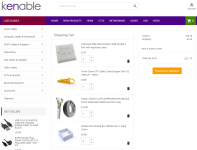Hello
I’m intending on installing a home Ethernet kit to my office - a hard wired connection from my router to my computers in the office. The wire will run through the walls and under the floorboards, no problem.
Ideally, I would like flush / neat wall connections at each end (I.e. something I plug the router into at the wall, and then something that I plug my computers into at the wall in the office).
This seems really dumb, but what do I actually need to buy for this? ‘Packs’ of bits to that effect don’t seem readily available and if I buy bits separately I think I might need to chop wires to mount them to the wall plugs etc.
Any advice whatsoever on the best way of achieving this would be helpful. Ideally, I’d want two connections in the office which I think makes it a bit more complicated....
Cheers.
I’m intending on installing a home Ethernet kit to my office - a hard wired connection from my router to my computers in the office. The wire will run through the walls and under the floorboards, no problem.
Ideally, I would like flush / neat wall connections at each end (I.e. something I plug the router into at the wall, and then something that I plug my computers into at the wall in the office).
This seems really dumb, but what do I actually need to buy for this? ‘Packs’ of bits to that effect don’t seem readily available and if I buy bits separately I think I might need to chop wires to mount them to the wall plugs etc.
Any advice whatsoever on the best way of achieving this would be helpful. Ideally, I’d want two connections in the office which I think makes it a bit more complicated....
Cheers.



